Financial modeling is crucial for banks, aiding in decision-making, risk management, and strategic planning. However, inherent model risks can cause significant financial and reputational damage. This blog discusses types of model risks—data, algorithmic, and implementation—and outlines strategies like data governance, model validation, and continuous monitoring to mitigate these risks and ensure model reliability and accuracy.
Financial modeling plays a critical role in banks and financial institutions. They assist financial institutions in decision-making, risk management, and strategic planning processes.
Therefore, banks and financial institutions heavily rely on these models, from measuring credit risk and predicting economic conditions to pricing complex derivatives and ensuring regulatory compliance.
Although these financial models are powerful and beneficial, they pose inherent risks that can lead to financial and reputational damage, if not managed appropriately.
Model risk refers to the potential of losing a possible future gain from a model not developed, implemented, or used correctly. Model risks may occur due to reasons, such as feeding inaccurate data into the model, a modally inadequate structure, inappropriate assumptions during model development, or a technical problem in its implementation.
This blog presents the different types of model risks, their sources, and mitigation strategies to help financial institutions control such risks and ensure the reliability and accuracy of their models.
1. Data Risk
The risk of data, or what is known as the input risk, is the quality and integrity of the data that leads up to financial models. A model is as good as the data it relies on. Therefore, if data is not of the right quality or is inconsistent, inaccurate, or biased, it can lead to erroneous outcomes.
Explore how cognitive financial modeling with sentiment and behavioral analytics is improving data-driven modeling accuracy in complex environments.
A report by Gartner estimates that poor data quality costs organizations an average of $12.9 million annually. This underlines the financial impact of data risk.
Common Sources of Data Risk
- Data Quality Issues
Models can also create abnormal results if the data is incomplete, outdated, or inaccurate.
For instance, the use of out-of-date market prices of financial instruments would give rise to incorrect valuation and measures of risk. - Data Bias
Any model that derives from biased data—a reflection of past patterns or due to biased sampling—will most likely represent a model with poor generalization into new scenarios. It is problematic with credit-scoring models, which tend to propagate existing biases against certain demographic groups. - Data Integration Problems
There may be discrepancies in the data consistency when drawn from different sources if the data formats or definitions are not harmonized. This can often lead to modeling that does not necessarily reflect the underlying financial realities.
Strategies to Mitigate Data Risk
- Data Governance
Robust data governance frameworks can help ensure the quality and consistency of data across the organization. This includes conducting regular data audits and validation processes in standardized data definitions. - Bias Detection and Correction
These are techniques to detect and correct the implicit biases in data so that the models can be more uniform and precise. This includes data resampling, debiasing algorithms, and overlaying fairness constraints during the model’s training. - Data Quality Tools
These tools can check and clean data to some extent and point out elements in the data that have a potential risk of being erroneous and flawed. This will help ensure cleaner inputs for models.
2. Algorithmic Risk
Algorithmic risk involves errors, limitations, or incompleteness of mathematical-statistical methods forming the base of the model. Despite high-quality data, some poor algorithms can result in misleading results.
For an industry view on current modeling challenges and priorities, see our insights on top model risk management priorities in banking.
Common Sources of Algorithm Risk
- Model Assumptions
Most financial models are based on certain assumptions that alleviate practical complications. However, modeling assumptions can be unrealistically posited or very rigid, which might generate a significantly off-the-mark prediction.
The Basel Committee on Banking Supervision highlights that model assumptions, if not realistic, can lead to significant discrepancies in risk assessment, potentially causing financial losses.
- Overfitting
It is a state in which the models become too intricate or complex, ultimately overcomplicated when fitting historical data. In most cases, this traps noise, not general underlying structure. Therefore, this can lead to poor prediction performance from a new or unseen data set.
Research by Deloitte indicates that overfitting is a common issue in financial models, leading to poor predictive performance. Overfitting occurs in approximately 30% of financial models due to overly complex algorithms.
- Model Complexity
Overly complex models can be difficult to interpret or validate. A model lacking transparency in behavior can make it difficult to identify and rectify mistakes.
Strategies to Mitigate Algorithmic Risks
- Model Validation
The validation of models should rigorously and periodically involve back-testing on historical data, sensitivity analysis to different environments, and out-of-sample tests to confirm model robustness. - Simplification
It is best to keep models simple as complex models can easily overfit data. Simple models can also enhance interpretability and reduce the risk of overfitting.
You should consider a complex model only if the advantage of such a model over a simpler model is straightforward. - Transparency and Documentation
A transparent model, duly documented with demonstrations, model assumptions, design decisions, and limitations, will allow stakeholders to understand the workings of the model and potential risks.
3. Implementation Risk
Implementation risk or process risk becomes evident in the deployment and operational usage of the models. By nature, a well-constructed model with good-quality data can still fail.
Common Sources of Implementation Risk
- Coding Errors
Errors or mistakes in the coding or programming of models can change the model’s behavior and, therefore, lead to unusual behavior and incorrect results.
A study shows that 85% of data science projects fail due to poor integration and coding errors, which underscores the importance of proper implementation and system integration.
- System Integration
It might sometimes be a bit arduous to integrate the models with the existing IT systems and workflows. Challenges such as incompatibility or misconfigurations can prevent the model from functioning as intended. - Operational Processes
Ineffective operational processes relating to model monitoring, maintenance, and updating commonly result in the use of models that are too old or models that are not functioning correctly.
Strategies to Mitigate Implementation Risk
- Code Review and Testing
With an in-depth and rigorous code review and testing, banks and financial institutions can unearth and correct defects early during the implementation process. The use of automated testing frameworks may further help the models’ reliability. - Change Management
With adequate change management procedures, banks and financial institutions can ensure any modifications to models are thoroughly reviewed and tested before deployment. This involves clear documentation with changes considered and version control. - Continuous Monitoring
Continuous performance monitoring of the model is a crucial exercise. It involves tracking key performance indicators, periodic reviews, and sometimes appropriate action to address any issues that may arise.
Conclusion
Model risk is multilayered; hence, it has to be dealt with on a comprehensive and pre-emptive basis. It is crucial for banks and financial institutions to proactively maintain the reliability and accuracy of their financial models, which is key to decision-making, risk management, and strategic planning.
Mitigation strategies include data governance, bias correction, model validation, simplification, transparent documentation, code review, change management, and continuous monitoring.
Anaptyss offers tailored solutions and expertise for developing a robust Model Risk Management (MRM) framework that identifies, quantifies, and mitigates model risks in line with regulatory standards.
We recently helped a leading U.S. financial institution achieve 40% faster validation of third-party credit risk models using machine learning.
Our expertise in financial modeling, risk management, and regulatory compliance enables practical and tailored solutions to manage model risks and enhance financial institutions’ decision-making and operational efficiency.
To learn more, contact us at: info@anaptyss.com.


















